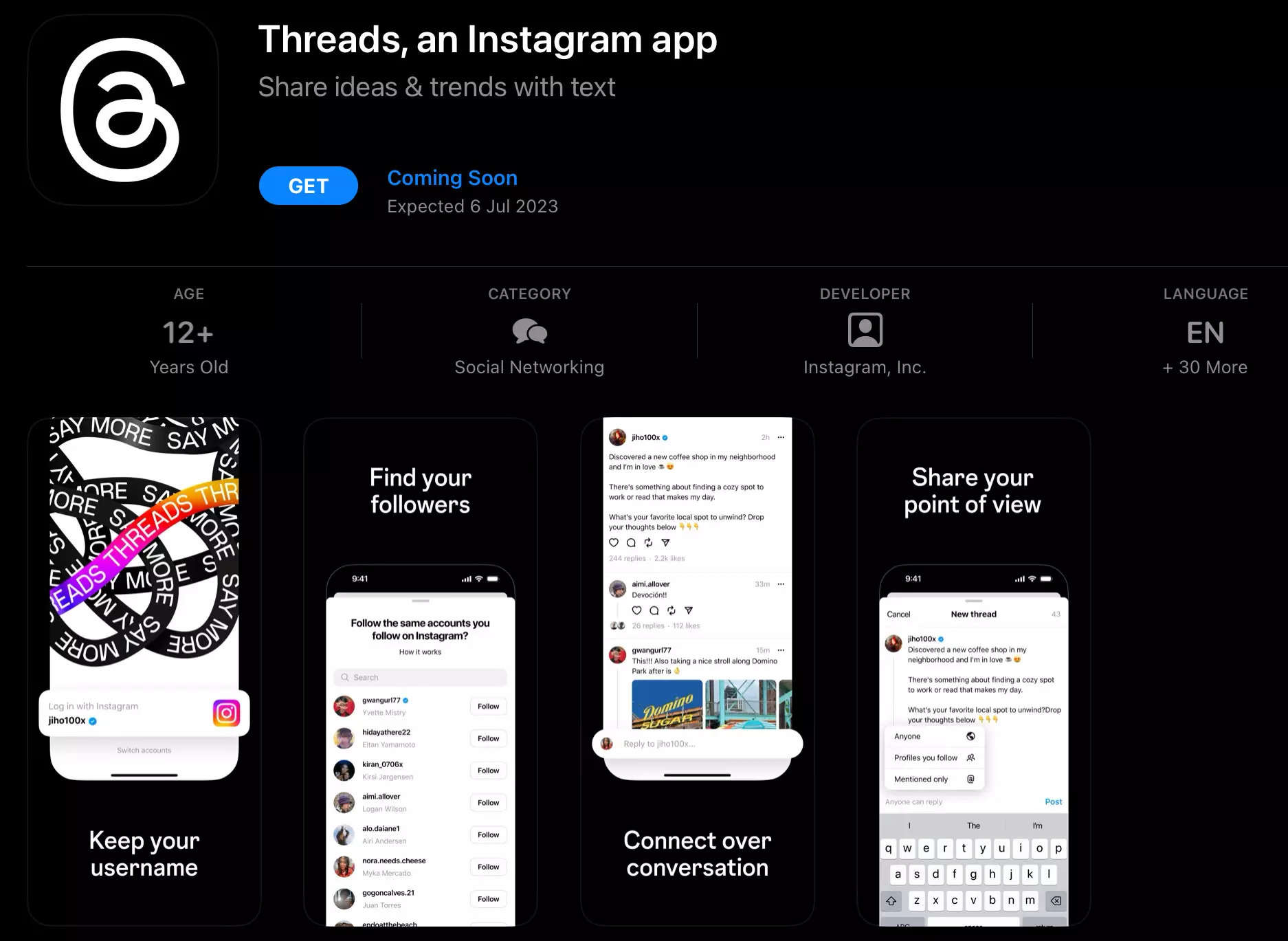In today’s digital age, social media has become an integral part of our lives. It has revolutionized the way we communicate and share information. With the emergence of new social media channels, such as Threads, the opportunities for businesses to connect with their audience and gain valuable insights have multiplied. In this article, we will explore the concept of sentiment analysis Threads and how it can help unleash the power of conversations with real-time insights.
Sentiment Analysis Threads: Harnessing Real-Time Insights from Conversations

Introduction to Sentiment Analysis
Sentiment analysis, also known as opinion mining, is the process of extracting subjective information from text data. It involves determining the sentiment expressed in a piece of content, whether it’s positive, negative, or neutral. Sentiment analysis allows businesses to gauge public opinion, understand customer satisfaction, and make data-driven decisions.
Understanding Threads: A New Social Media Channel
Threads is a new social media channel that has gained significant popularity in recent years. Unlike traditional social media platforms, Threads focuses on fostering meaningful conversations and interactions. It provides a space for users to share their thoughts, ideas, and experiences more intimately and engagingly.
The Importance of Sentiment Analysis Threads
Sentiment analysis plays a crucial role in Threads as it helps businesses understand the emotions, opinions, and attitudes expressed by users. By analyzing the sentiment of conversations, businesses can gain valuable insights into their target audience’s preferences, needs, and pain points. This information can then be utilized to tailor marketing strategies, enhance customer engagement, and improve brand reputation.
How Sentiment Analysis Works in Threads
Sentiment analysis in Threads involves the use of natural language processing (NLP) algorithms to analyze text data and determine the sentiment associated with it. These algorithms classify text into positive, negative, or neutral categories based on the words, phrases, and context used. Machine learning techniques are often employed to train sentiment analysis models, enabling them to improve accuracy over time.
Benefits of Sentiment Analysis in Threads

- Understanding Customer Sentiment: By analyzing sentiment in Threads, businesses can gain a deeper understanding of customer sentiment towards their brand, products, and services. This insight enables them to address customer concerns, improve customer experience, and build stronger relationships.
- Identifying Trends and Influencers: Sentiment analysis allows businesses to identify emerging trends, popular topics, and influential users within Threads. This information can be leveraged to create targeted marketing campaigns, collaborate with influencers, and stay ahead of the competition.
- Monitoring Brand Reputation: With sentiment analysis, businesses can monitor the sentiment surrounding their brand in real-time. They can quickly identify any negative sentiment or potential reputation risks and take proactive measures to address them promptly.
- Evaluating Marketing Campaigns: Sentiment analysis provides valuable feedback on the effectiveness of marketing campaigns in Threads. By analyzing the sentiment associated with campaign-related conversations, businesses can gauge the impact and make necessary adjustments to optimize future campaigns.
Real-Time Insights for Effective Decision Making
One of the key advantages of sentiment analysis in Threads is the ability to gain real-time insights. Traditional market research methods can be time-consuming and costly, whereas sentiment analysis provides instant feedback from a large volume of conversations. These real-time insights enable businesses to make informed decisions promptly and respond to changing market dynamics effectively.
Enhancing Customer Engagement through Sentiment Analysis
By understanding the sentiment of conversations in Threads, businesses can enhance customer engagement. They can identify positive interactions and sentiments and leverage them to nurture relationships and encourage brand advocacy. Additionally, businesses can proactively address negative sentiment and provide timely support to improve customer satisfaction.
Leveraging Sentiment Analysis for Brand Reputation Management
Brand reputation is vital for businesses, and sentiment analysis in Threads can help manage it effectively. By monitoring sentiment, businesses can identify potential reputation risks and take immediate action to mitigate them. They can also track sentiment trends over time to evaluate the effectiveness of their reputation management strategies.
Sentiment Analysis for Competitive Analysis
Sentiment analysis in Threads is not only useful for monitoring one’s brand but also for competitive analysis. By analyzing the sentiment associated with competitors’ conversations, businesses can identify strengths, weaknesses, and opportunities. This information can inform product development, marketing strategies, and positioning in the market.
Challenges and Limitations
While sentiment analysis offers valuable insights, it also comes with challenges and limitations. Some of these include:
- Contextual Understanding: Sentiment analysis algorithms may struggle to understand the context and nuances of certain conversations, leading to inaccurate sentiment classification.
- Language Variations: Different languages and dialects may require separate sentiment analysis models, making it challenging to analyze multilingual conversations in Threads.
- Sarcasm and Irony: Sentiment analysis algorithms may have difficulty detecting sarcasm and irony, leading to misinterpretation of sentiment.
Best Practices for Successful Sentiment Analysis in Threads
To ensure successful sentiment analysis in Threads, consider the following best practices:
- Training Data: Use high-quality training data that accurately represents the target audience and the language used in Threads.
- Customization: Customize sentiment analysis models to the specific domain and industry, as generic models may not provide optimal results.
- Human Validation: Employ human validation to verify the accuracy of sentiment analysis results, especially for critical decision-making processes.
Integrating Sentiment Analysis into Marketing Strategies
Integrating sentiment analysis into marketing strategies can yield significant benefits. Businesses can use sentiment analysis to:
- Personalize Marketing Campaigns: Tailor marketing messages and content based on the sentiment and preferences of the target audience.
- Identify Influencers: Identify influential users within Threads and collaborate with them to amplify the reach and impact of marketing campaigns.
- Monitor Campaign Performance: Monitor sentiment associated with marketing campaigns in real-time to evaluate their effectiveness and make data-driven adjustments.
Future Trends
The field of sentiment analysis is continually evolving, and as Threads continue to grow, new trends are expected to emerge. Some future trends in sentiment analysis and Threads include:
- Improved Multilingual Analysis: Advancements in NLP techniques will enable more accurate sentiment analysis across various languages and dialects.
- Emotion Detection: Sentiment analysis algorithms will become more sophisticated, allowing for the detection and analysis of specific emotions expressed in conversations.
- Real-Time Sentiment Visualization: Interactive visualizations and dashboards will provide real-time sentiment insights, making it easier for businesses to monitor and analyze sentiment trends.
Conclusion
Sentiment analysis in Threads opens up a world of possibilities for businesses to harness the power of conversations and gain valuable insights. By understanding the sentiment expressed by users, businesses can enhance customer engagement, improve brand reputation, and make data-driven decisions. As sentiment analysis continues to advance, businesses that embrace this technology will be well-positioned to thrive in the ever-evolving social media landscape.
To explore the power of sentiment analysis in Threads, request a demo from AIM Technologies, a leading provider of advanced social media analytics solutions. Don’t miss out on the opportunity to gain real-time insights from your conversations.
FAQs
1. What is sentiment analysis?
- Sentiment analysis, also known as opinion mining, is the process of extracting subjective information from text data to determine the sentiment expressed, whether it’s positive, negative, or neutral.
2. How does sentiment analysis work in Threads?
- Sentiment analysis in Threads involves using natural language processing (NLP) algorithms to analyze text data and classify it into positive, negative, or neutral categories based on the words, phrases, and context used.
3. What are the benefits of sentiment analysis?
- Sentiment analysis provides benefits such as understanding customer sentiment, identifying trends and influencers, monitoring brand reputation, and evaluating marketing campaigns, among others.
4. What are the limitations of sentiment analysis?
- Some limitations of sentiment analysis include challenges in contextual understanding, language variations, and difficulties in detecting sarcasm and irony.
5. How can sentiment analysis be integrated into marketing strategies?
- Sentiment analysis can be integrated into marketing strategies to personalize campaigns, identify influencers, and monitor campaign performance in real time.




